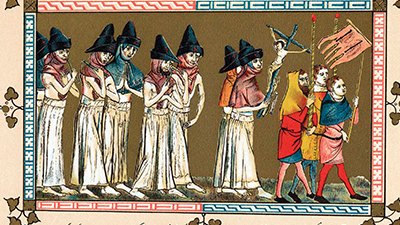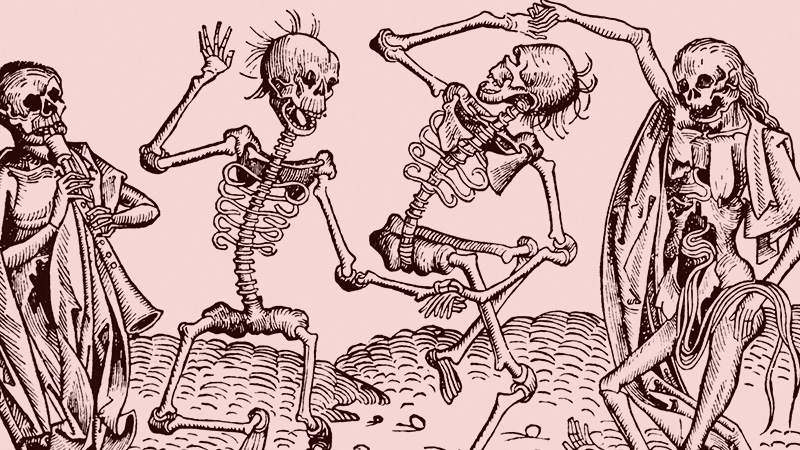Environmental Consequences of Connectivity
Teacher Resources
Driving Question: How did increased trade and travel lead to unintended consequences c. 1200 to 1450 CE?
Humans are social animals, which is why we like to create communities and share goods, beliefs, and information across networks. But there are consequences associated with these connections. Many of these consequences are positive—we share ideas, innovations, art, literature, and goods across networks. But increasing connections can also produce negative consequences. As new ideas and goods moved across trade routes, so too did new diseases. The causes and consequences of the fourteenth-century Black Death are one such example.
Learning Objectives:
- Explain the environmental effects of the various networks of exchange in Afro-Eurasia from c. 1200 to c. 1450.
- Use historical thinking skills and reasoning practices such as sourcing, contextualization, comparison, continuity and change over time (CCOT), and claim testing to evaluate historical events and processes.
Vocab Terms:
- empire
- merchant
- plague
- trade network
Opener: Environmental Consequences of Connectivity
To teach this lesson step, refer to page 3 of Lesson 2.6 Teaching Guide.
An outbreak of insights about this activity have been shared in this thread on the OER Project Community Forum—check it out!
Time to practice your negotiation skills! Trade with peasants, merchants, and nobles to get what you want and need. Make sure to keep track of your trading partners!
Causation: Introduction
To teach this lesson step, refer to page 4 of Lesson 2.6 Teaching Guide.
Check out our Causation One-Pager for a quick review of this important historical thinking skill.
Have you ever heard the expression “the straw that broke the camel’s back”? It means something that finally caused a consequence or change of some sort, and in the story you are about to read, you will see what that “straw” was!
Trade Networks and the Black Death
To teach this lesson step, refer to page 5 of Lesson 2.6 Teaching Guide.
Sometimes the most consequential events can begin with the smallest causes. This is most certainly the case with the Black Death, which started with a small bird and wound up killing thousands upon thousands.
-
Guiding Questions
-
Before you read
Preview the questions below, and then skim the article. Be sure to look at the section headings and any images.
While you read
Look for answers to these questions:
- How did the success of the Mongol state help the Black Death spread?
- How many people are estimated to have died from the plague?
- What do gerbils have to do with the plague?
- Where was the plague the worst? Why?
- How did the plague affect economies?
After you read
Respond to the following questions:
- Using evidence from the article, describe the extent to which this article explains the environmental effects of the various networks of exchange in Afro-Eurasia from c. 1200 to 1450.
- In the economic systems narrative, we generally hear about expanded trade routes as a purely good thing. How does this article affect that view?
- What “change” in the Afro-Eurasian networks of exchange does this article cover, and how would you describe it?
Source Collection: The Black Death
To teach this lesson step, refer to page 2 of Lesson 2.6 Teaching Guide.
This video is an excellent resource for teaching sourcing in the classroom.
Primary and secondary sources are incredibly important to historians as they allow us to piece together history as accurately as possible. You will use this article to analyze primary and secondary sources regarding the Black Death. Use the Quick-Sourcing Tool to help you analyze these primary source excerpts.
Causation: The Black Death
To teach this lesson step, refer to page 7 of Lesson 2.6 Teaching Guide.
A bubonic Big Bang? This blog post provides insight into recent research around the causes of the Black Death.
To understand the consequences, we must also examine the causes of those consequences. This activity will see you analyze the causes and consequences of the Black Death.
Closer: Environmental Consequences of Connectivity
To teach this lesson step, refer to page 9 of Lesson 2.6 Teaching Guide.
It’s time once again to look at the Themes that run through these units, and see if what we thought at the beginning is what we still think now!






